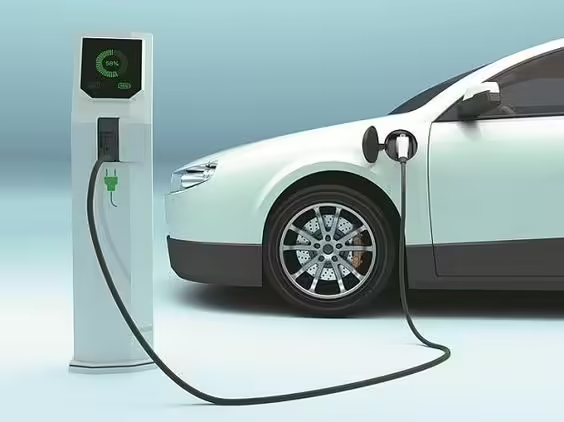
Electric vehicles (EVs) are becoming increasingly popular due to their environmental benefits, lower running costs, and reduced maintenance needs compared to traditional gasoline-powered cars. While EVs eliminate many of the mechanical components that require regular upkeep in conventional vehicles, they still need some maintenance to ensure optimal performance and longevity. Understanding what kind of maintenance your EV needs will help keep your car running smoothly and avoid unexpected issues. Here’s a comprehensive guide on maintaining your electric vehicle.
1. Battery Care and Management
The battery is the most critical component of an EV, and its health directly impacts the car’s performance and range. Although EV batteries are designed to last for years, proper care is essential.
- Monitor Charging Habits: Avoid frequently charging your battery to 100% or letting it drop to 0%. Instead, keep it within a range of 20-80% for regular use, as this helps prolong battery life.
- Check for Software Updates: EV manufacturers often release software updates that can optimize battery management, improve range, and enhance overall vehicle efficiency. Ensure your EV’s software is up-to-date to benefit from these improvements.
- Avoid Extreme Temperatures: Extreme heat or cold can degrade battery health. Park in a garage or shaded area when possible, and use your vehicle’s thermal management system to maintain an optimal battery temperature.
2. Brake System Maintenance
EVs use regenerative braking, which recovers energy when slowing down and reduces wear on traditional brake components. However, the brake system still needs regular checks to ensure it’s functioning properly.
- Inspect Brake Pads and Rotors: Although regenerative braking reduces wear, brake pads and rotors should still be inspected periodically, especially if you drive in stop-and-go traffic or hilly areas.
- Brake Fluid Replacement: Over time, brake fluid absorbs moisture and becomes less effective. Check your vehicle’s manual for the recommended interval, but generally, brake fluid should be replaced every two to three years.

3. Tire Maintenance
Tires are critical for safety, efficiency, and overall vehicle performance. EVs are often heavier than traditional cars due to their batteries, which can lead to faster tire wear.
- Regular Tire Rotations: EV tires should be rotated every 6,000 to 8,000 miles to ensure even wear and extend tire life. Check your owner’s manual for specific recommendations.
- Monitor Tire Pressure: Properly inflated tires improve energy efficiency and ensure safe handling. Check tire pressure monthly and before long trips, adjusting as needed according to the manufacturer’s specifications.
- Wheel Alignment: Misaligned wheels can lead to uneven tire wear and decreased efficiency. Have your wheel alignment checked annually or whenever you notice unusual tire wear or handling issues.
4. Cooling System Maintenance
EVs use cooling systems to regulate battery temperature, the electric motor, and other power electronics. Keeping the cooling system in good shape is vital for the overall health of your EV.
- Check Coolant Levels: Coolant helps maintain optimal operating temperatures. Regularly check coolant levels and top up if necessary, following your vehicle’s maintenance schedule for full system checks.
- Inspect for Leaks: Look out for any signs of coolant leaks, which can affect the performance and safety of your EV. If you notice a leak, schedule an inspection with your service center.
5. HVAC System Upkeep
The HVAC (Heating, Ventilation, and Air Conditioning) system in your EV is not only responsible for cabin comfort but also plays a role in maintaining battery temperature in some models.
- Replace Cabin Air Filters: Cabin air filters should be replaced every 15,000 to 30,000 miles, depending on driving conditions. Clean filters ensure optimal airflow and efficient HVAC performance.
- HVAC System Check: Regularly check that the HVAC system, including the heat pump (if applicable), is functioning correctly, as it contributes to energy efficiency, especially in cold weather.
6. Software and Electrical System Updates
Modern EVs are packed with technology, including complex software systems that control everything from battery management to infotainment.
- Keep Software Up-to-Date: Regular software updates often improve efficiency, enhance range, and introduce new features. Most EVs will alert you when an update is available—ensure you complete these updates promptly.
- Check Electrical Systems: Ensure lights, wipers, and other electrical components are working correctly. Electrical system checks should be part of your regular maintenance routine.
7. Suspension and Steering Checkups
EVs are generally heavier, which can put additional strain on suspension and steering components. Regular inspections ensure these parts remain in good condition.
- Inspect Suspension Components: Check shocks, struts, and bushings for wear or damage. Well-maintained suspension ensures a comfortable ride and proper handling.
- Steering System Check: Ensure steering components are functioning properly and that there’s no excessive play or unusual noises during operation.
8. Fluids and Lubrication
While EVs don’t need oil changes like gasoline vehicles, they still have fluids that need attention.
- Transmission Fluid (if applicable): Some EVs have reduction gearboxes that require periodic fluid changes. Check your owner’s manual for intervals.
- Lubricate Moving Parts: Door hinges, locks, and other mechanical components benefit from occasional lubrication to prevent squeaks and ensure smooth operation.
Conclusion
Maintaining an electric vehicle is generally simpler and less costly than maintaining a traditional car, thanks to fewer moving parts and no need for oil changes. However, regular maintenance checks are still essential to ensure your EV runs efficiently and safely. By staying proactive with battery care, brake inspections, tire maintenance, and software updates, you can enjoy the many benefits of EV ownership with minimal hassle. Keeping your EV well-maintained not only prolongs its life but also enhances your driving experience.

Leave a Reply